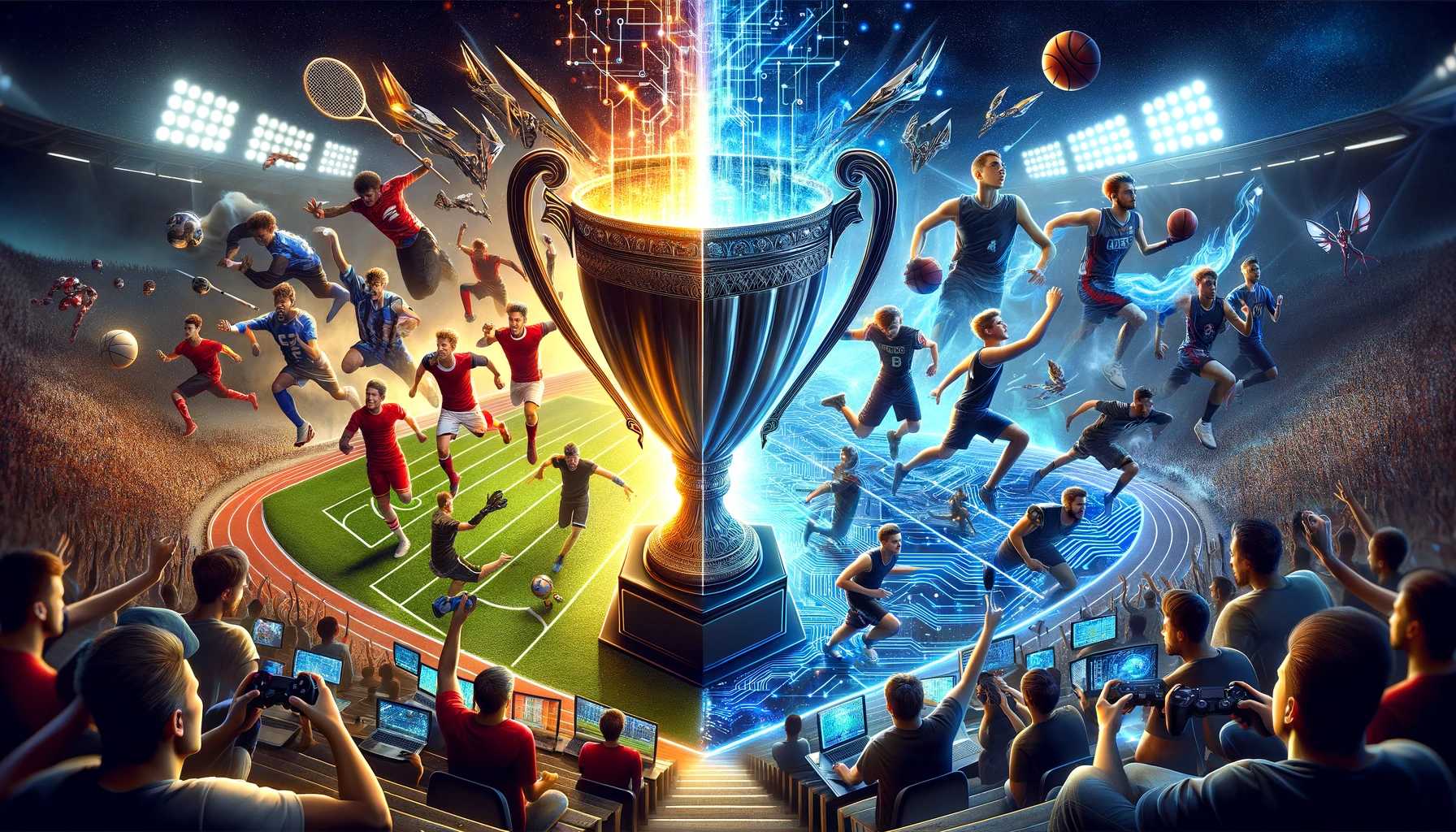Introduction:
Picture this: a packed stadium, pulsating with energy as fans roar in excitement, their eyes glued to giant screens displaying digital battles of strategy and skill. This isn't a description of a traditional sports event; it's the electrifying world of esports. Over the past decade, competitive gaming has exploded onto the global stage, captivating audiences and redefining the landscape of sports entertainment. In this blog post, we'll explore the rise of esports, its impact on traditional sports, and the dynamic relationship between the two.
The Emergence of Esports:
The concept of competitive gaming isn't new. For decades, gamers have gathered at arcades, LAN parties, and online forums to test their skills against one another. However, it wasn't until the turn of the millennium that esports began to gain mainstream recognition. Games like "Counter-Strike," "StarCraft," and "Quake" laid the foundation for competitive gaming, attracting dedicated players and modest audiences.
Fast forward to the present day, and esports has become a global phenomenon, with professional leagues, lucrative sponsorships, and millions of passionate fans. Games like "League of Legends," "Dota 2," and "Overwatch" fill arenas to capacity, while live streams on platforms like Twitch and YouTube draw millions of viewers from around the world. Esports has transcended its roots as a niche subculture to become a cultural juggernaut, rivaling traditional sports in popularity and influence.
The Impact on Traditional Sports:
At first glance, esports and traditional sports may seem like polar opposites. One is played on a digital screen, while the other takes place on physical fields and courts. However, the lines between the two are becoming increasingly blurred as esports continues to grow and evolve.
One area where esports has made a significant impact on traditional sports is in the realm of spectatorship. As younger generations gravitate toward digital platforms for entertainment, traditional sports leagues have begun to take notice. Organizations like the NBA and NFL have invested in esports initiatives, creating virtual leagues and tournaments based on popular video game franchises. This crossover has introduced a new generation of fans to traditional sports while providing existing fans with alternative forms of engagement during off-seasons and downtime.
Furthermore, esports has inspired innovation within the realm of sports broadcasting. With its emphasis on digital technology and interactivity, esports broadcasts have pushed the boundaries of traditional sports coverage, incorporating features like player perspectives, real-time statistics, and interactive overlays. Traditional sports networks have taken note, integrating elements of esports-style production into their own broadcasts to enhance the viewing experience for fans.
The Mutual Benefits:
While esports and traditional sports may compete for viewership and sponsorship dollars, there is also a symbiotic relationship between the two. Esports has brought fresh energy and innovation to the world of sports entertainment, attracting younger audiences and expanding the reach of traditional sports brands. Conversely, traditional sports provide esports with legitimacy and mainstream exposure, lending credibility to a burgeoning industry still fighting for recognition.
Moreover, the skills and strategies honed in esports are increasingly being recognized as valuable assets in traditional sports training and analysis. Professional athletes and coaches are turning to esports simulations and analytics to gain insights into opponent strategies, improve performance, and enhance training regimens. The hand-eye coordination, reflexes, and strategic thinking required to excel in esports translate seamlessly to traditional sports, blurring the lines between virtual and physical competition.
Conclusion:
The rise of esports represents a paradigm shift in the world of sports entertainment, challenging traditional notions of competition and spectatorship. As competitive gaming continues to grow and evolve, its influence on traditional sports will only continue to deepen. From shared audiences and innovative broadcasting techniques to mutual respect and collaboration, the relationship between esports and traditional sports is symbiotic and dynamic.
As fans, players, and stakeholders, we have the opportunity to shape the future of sports entertainment, embracing the best of both worlds and celebrating the diverse forms of competition that unite us. Whether on the digital battlefield or the grassy field of play, the spirit of competition transcends boundaries, bringing us together in the shared pursuit of excellence and camaraderie. Esports has arrived, and its impact on traditional sports is only just beginning.
